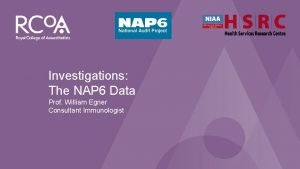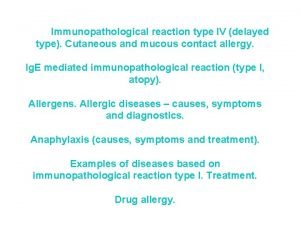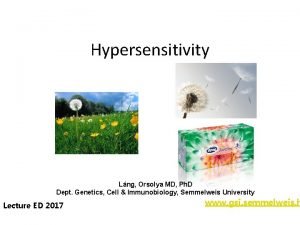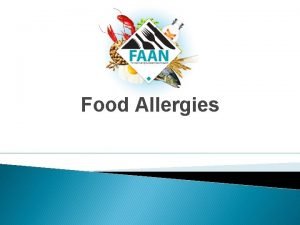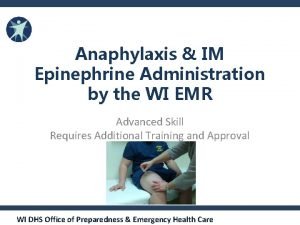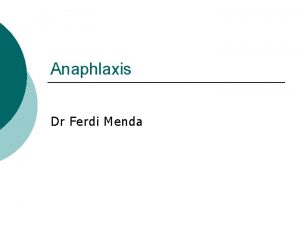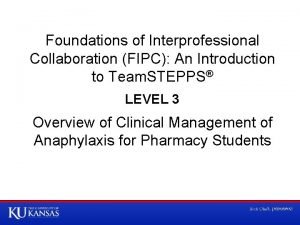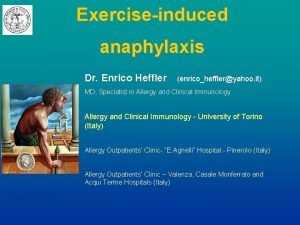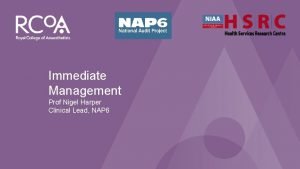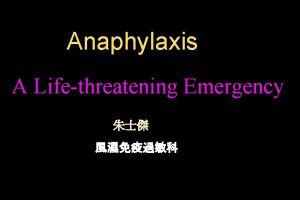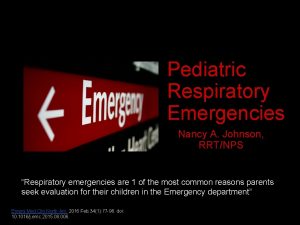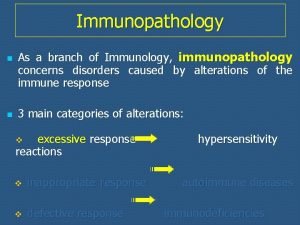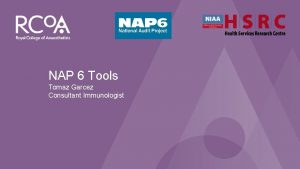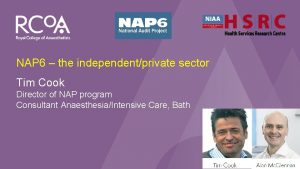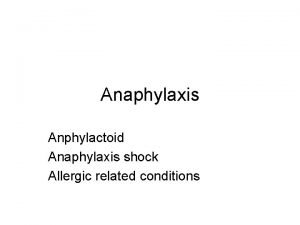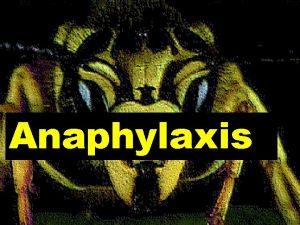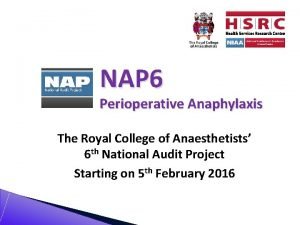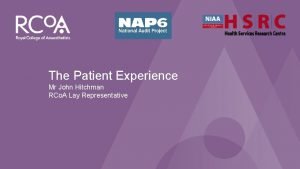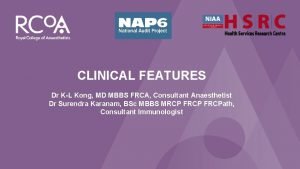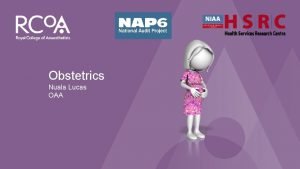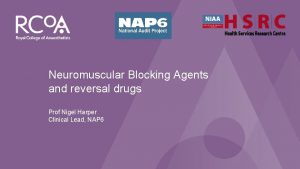NAP 6 Perioperative Anaphylaxis Immediate Management Prof Nigel













- Slides: 13

NAP 6: Perioperative Anaphylaxis Immediate Management Prof Nigel Harper Clinical Lead, NAP 6

NAP 6: Perioperative Anaphylaxis What we already know • Adrenaline is the mainstay of treatment • Patients taking beta-blockers may be adrenaline-resistant (glucagon is more effective) • Other vasoactive drugs may be effective – Metaraminol – Noradrenaline – Vasopressin • Large volumes of IV fluids should be administered • ALS protocol should be followed in cardiac arrest • Steroids generally accepted to be beneficial • Antihistamines may improve urticaria/swelling

NAP 6: Perioperative Anaphylaxis What we already know - adrenaline • Not the usual first drug for ‘usual’ anaesthesia-induced hypotension • Beneficial alpha and beta agonist properties • Early administration important • Guidelines recommend IV and IM routes • AAGBI: 50 mcg repeated as necessary • ANZAAG: 100 mcg → 100 -200 mcg every 2 mins → infusion after 3 rd bolus • Reluctance to give adrenaline noted in a Danish study

NAP 6: Perioperative Anaphylaxis Recognition and starting specific treatment

NAP 6: Perioperative Anaphylaxis Administration of adrenaline • Adrenaline not administered in 17. 7% of cases • Not given when indicated (omitted or late) in 19. 4% of cases • IV infusion in 31% of cases • IM route in 14%, and both in 6% of cases • Median dose – Grade 3: 200 mcg – Grade 4: 500 mcg – Grade 5: 4 mg

NAP 6: Perioperative Anaphylaxis Other vasoactive drugs • • • Metaraminol given (usually first) in 69% of cases Noradrenaline infusion administered in 19% Phenylephrine administered mainly in obstetric cases Two patients received vasopressin 18% of patients were taking a betablocker but only one received glucagon

NAP 6: Perioperative Anaphylaxis Steroids and antihistamines • Hydrocortisone given in only 83% of cases • Dexamethasone given after the event in 16% – Dexamethasone given as an antiemetic in 60% of all GAs – 7. 5 mg equivalent to hydrocortisone 200 mg • Chlorphenamine given in 74% of cases and ranitidine in 5. 3% – Associated with increased probability of no harm (OR = 2. 2) & decreased probability of moderate/severe harm (OR = 0. 41) (univariate logistic regression - patient factors and resuscitation drugs) – BUT chlorphenamine was strongly associated with good clinical management (P<0. 005)

NAP 6: Perioperative Anaphylaxis Bronchodilator Drugs • • • Bronchospasm present in almost half Specific bronchodilator used in only ¼ Inhaled salbutamol administered in 10. 2% Magnesium sulphate given in 7. 4% - may exacerbate hypotension IV salbutamol boluses administered in 4. 2% Ketamine and aminophylline used in a few cases

NAP 6: Perioperative Anaphylaxis Is sugammadex effective in rocuronium-anaphylaxis? • Sugammadex was administered during the first six hours following the event in 19 (7. 1%) cases (median dose 300 mg, range 150– 1200 mg). The suspected trigger agent was rocuronium in nine cases, and was the actual culprit in seven • When sugammadex was given in rocuronium-anaphylaxis no additional treatment was started in 57%, but further vasopressors or bronchodilators were needed in 43% • A similar proportion was seen in non-rocuronium anaphylaxis • Compatible with results reported by Platt (2015)

NAP 6: Perioperative Anaphylaxis Intravenous Fluids • Vital for restoring circulating blood volume and cardiac filling • 98% received IV crystalloid in the 1 st hour • 9% received IV colloid • IV Fluid management inappropriate in 19% (usually not enough given) – first hour: median 1 L – subsequent 2 hours: median 1 L – hours 3 to 5: median 0. 5 L • AAGBI guidelines: ‘Administer saline 0. 9% … at a high rate… (large volumes may be required). ’ • ANZAAG guidelines ‘… repeated fluid boluses of 20 mls/kg may be required. ’

NAP 6: Perioperative Anaphylaxis Outcome of intervention/surgery • Procedure unchanged in 35% • Procedure not abandoned in 11 cases where it would have been appropriate • Patients were more likely to require critical care if surgery had been started • In 14% of abandoned cases, it was decided not to re-schedule surgery • Median unplanned hospital stay 1 day (range 0 to 150 days) • 54% transferred to critical care – Level 3: median 1 day (1 to 9 days) – Level 2: median 1 day (1 to 25 days) – estimated cost for the entire cohort £ 438, 102

NAP 6: Perioperative Anaphylaxis Recommendations – immediate management • Adrenaline is the primary treatment and should be administered immediately anaphylaxis is suspected. In the perioperative setting this will usually be IV • A rapid IV crystalloid (not colloid) fluid challenge of 20 ml/kg should be given immediately. This should be repeated several times if necessary • Administration of IV vasopressin 2 Units, repeated as necessary, should be considered when hypotension is refractory • In patients taking beta- blockers, early administration of IV glucagon 1 mg should be considered, repeated as necessary • Perioperative anaphylaxis guidelines and/or a management algorithm should be immediately available • Anaesthesia anaphylaxis treatment packs should be immediately available

NAP 6: Perioperative Anaphylaxis Thank You
